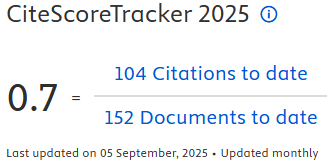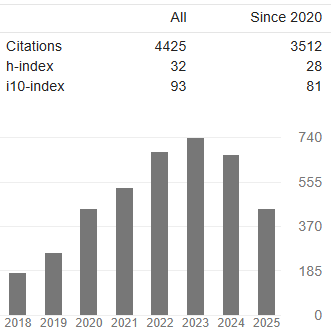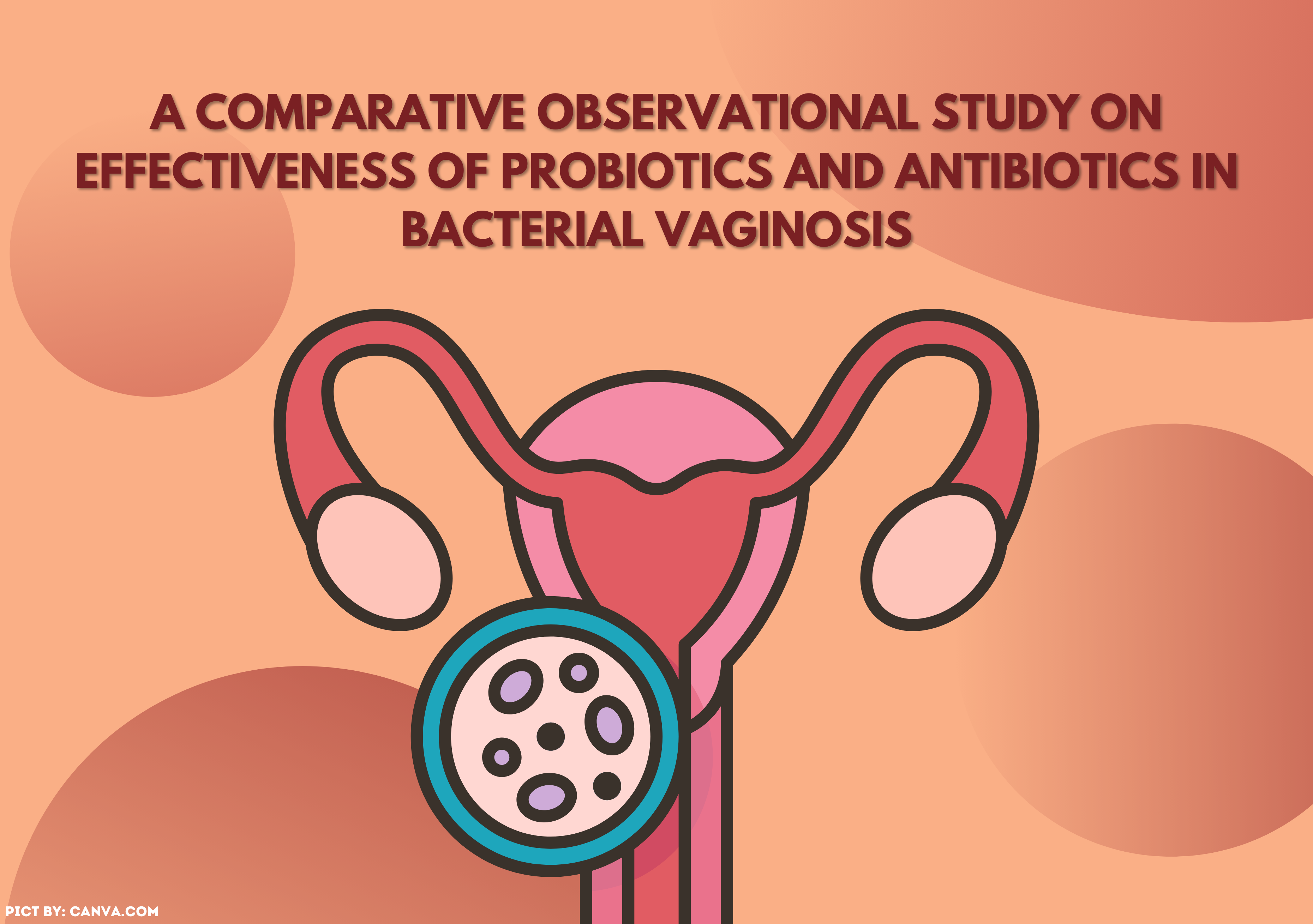RELATIONSHIP BETWEEN DRINKING WATER HABITS AND WORK CLIMATE PERCEPTIONS WITH DEHYDRATION INCIDENCE IN SHIPPING COMPANIES' WORKERS
Downloads
Introduction: Workers in the maintenance and repair division's shipping division work in outdoor physical environments, which get hot temperatures from the environment. They cause excessive sweating while working and can cause dehydration if not drinking enough water. Methods: This study aimed to analyze the relationship between drinking habits and work climate perception with dehydration status in shipping companies' workers. The research method was analytic observational, with a cross-sectional design in 2019 in one of the shipping companies with a sample size of 49 workers who were selected using simple random sampling from 55 worker populations. The independent variables included respondent characteristics, drinking water consumption habits, and work climate perceptions, while the dependent variable was dehydration status. Dehydration status among workers was measured base on the specific gravity of urine measured in the laboratory, and the working climate was measured using a heat stress monitor. Result: The results showed that 85.71% of workers had minimum dehydration status, and 14.29% had significant dehydration. Then, there was a meaningful relationship between drinking water habits and dehydration status (r = -0.320 and p = 0.025). There was also a relationship between workers' work climate perceptions and dehydration status (r = -0.283 and p = 0.049). Conclusion: The relationship showed a weak negative meaning that the less habit of drinking water among workers, the higher the dehydration status of the workers. The more disturbed they perceive the working climate; the less dehydrated status of workers will be. So it can be ignored that there were drinking habits and the work climate perceptions with dehydrated status in shipping companies' workers.
Keywords: dehydration status, drinking habits, work climate perceptions.
Andayani, K. and Dieny, F.F., 2013. Hubungan Konsumsi Cairan Dengan Status Hidrasi Pada Pekerja Industri Laki-Laki. Journal of Nutrition College, 2(4), pp.547–556. https://doi.org/10.14710/jnc.v2i4.3738
Ariantika, A. and Mardiyati, N.L., 2017. Hubungan Kebiasaan Minum Dengan Status Hidrasi Dan Kebugaran Jasmani Pada Atlet Di Persatuan Bulutangkis Kabupaten Kudus. Nutri-Sains: Jurnal Gizi, Pangan dan Aplikasinya, 1(1). https://dx.doi.org/10.21580/ns.2017.1.2.1526
Arianto, M.E. and Prasetyowati, D.D., 2019. Hubungan Antara Lingkungan Kerja Panas Dengan Keluhan Heat Related Illnes pada Pekerja Home Industry Tahu di Dukuh Janten , Bantul. Jurnal Ilmiah Kesehatan Masyarakat, 11(4), pp.318–324.
Bardosono, S. and Ilyas, E., 2014. Health, nutrition and hydration status of Indonesian workers: A preliminary study in two different environmental settings. Medical Journal of Indonesia, 23(2), pp.112–116. https://doi.org/10.13181/mji.v23i2.993
Boonruksa, P., Maturachon, T., Kongtip, P. and Woskie, S., 2020. Heat Stress , Physiological Response , and Heat-Related Symptoms among Thai Sugarcane Workers. International Journal of Environmental Research and Public Health, 17, pp.1–15. https://doi.org/10.3390/ijerph17176363
Dieny, F.F. and Putriana, D., 2015. Status hidrasi sebelum dan sesudah latihan atlet sepak bola remaja. Jurnal Gizi Indonesia, 3(2), pp.86–93. https://doi.org/10.14710/jgi.3.2.86-93
Fitriah, N., S, H.S., Sakundarno, M. and Udiyono, A., 2018. Faktor Risiko Kejadian Dehidrasi pada Petani Garam di Kecamatan Kaliori , Kabupaten Rembang. Jurnal Epidemiologi Kesehatan Indonesia, 2(2), pp.49–54. https://doi.org/10.7454/epidkes.v2i2.1843
Huda, A.I., Suwandi, T., Kesehatan, F. and Universitas, M., 2018. Hubungan Beban Kerja Dan Konsumsi Air Minum Dengan Dehidrasi Pada Pekerja Pabrik Tahu. The Indonesian Journal of Occupational Safety and Health, 7(3), pp.310–320. http://dx.doi.org/10.20473/ijosh.v7i3.2018.310-320
Imas, K.T.S., Setyaningsih, Y. and Suroto, 2018. Acclimatization , Water Intake Adequacy Rate , Individual Characteristics and Heat Strain : A Cross-Sectional Study on Heat Exposed Workers. E3S Wb Conferences, 73(06010), pp.1–5. https://doi.org/10.1051/e3sconf/20187306010
Jacklitsch, B., Williams, W., Musolin, K., Coca, A., Kim, J.-H. and Turner, N., 2016. NIOSH Criteria for a recommended standard: occupational exposure to heat and hot environments. DHHS (NIOS ed. US Department of Health and Human Services. Jacklitsch B, Williams WJ, Musolin K, Coca A, Kim J-H, Turner N. Cincinnati, OH: U.S. Department of Health and Human Services, Centers for Disease Control and Prevention, National Institute for Occupational Safety and Health.
Kuswana, W.S., 2014. Ergonomi dan K3 Kesehatan dan Keselamatan Kerja. Bandung: PT Remaja Rosdakarya.
Mathee, A., Oba, J. and Rose, A., 2010. Climate change impacts on working people (the HOTHAPS initiative): findings of the South African pilot study. Global Health Action, 3(1), pp.1–9. https://doi.org/10.3402/gha.v3i0.5612
Nilamsari, N., Damayanti, R. and Nawawinetu, E.D., 2018. Hubungan Masa Kerja Dan Usia Dengan Tingkat Hidrasi Pekerja Perajin Manik-Manik Di Kabupaten Jombang. Jurnal Kesehatan Terpadu (Integrated Health Journal), 9(2), pp.1–9. https://doi.org/10.32695/jkt.v2i9.14
Ningsih, N.K., 2019. Hubungan Suhu dan Kelembapan dengan Tingkat Dehidrasi pada Pekerja Pengasapan Ikan. The Indonesian Journal of Public Health, 14(1), pp.69–79. http://dx.doi.org/10.20473/ijph.v14i1.2019
NIOSH, 2011. OSHA - NIOSH Infosheet Protecting Workers from Heat Illness. Washington DC.
NIOSH, 2018. HEAT STRESS. [online] National Institute for Occupational Safety and Health. Available at:
Minister of Manpower Regulation No. 5 of 2018 concerning Occupational Safety and Health in the Work Environment.
PERDOKI, 2014. Pedoman Kebutuhan Cairan Bagi Pekerja Agar Tetap Sehat dan Produktif. Jakarta: Kementrian Kesehatan RI.
Puspita, A.D. and Widajati, N., 2017. Gambaran Iklim Kerja dan Tingkat Dehidrasi Pekerja Shift Pagi di Bagian Injection Moulding 1 PT.X Sidoarjo. JPH Recode, 1(1), pp.13–21. http://dx.doi.org/10.20473/jphrecode.v1i1.20452
Rismayanthi, C., 2012. Persepsi Atlet Terhadap Macam, Fungsi Cairan, Dan Kadar Hidrasi Tubuh Di Unit Kegiatan Mahasiswa Olahraga Universitas Negeri Yogyakarta. Medikora, 9(1). https://doi.org/10.21831/medikora.v0i1.4644
Sari, M.P., 2017. Iklim Kerja Panas dan Konsumsi Air Minum Saat Kerja Terhadap Dehidrasi. Journal of Public Health Research and Development, 1(2), pp.108–118.
Sari, N.A. and Nindya, T.S., 2017. Hubungan Asupan Cairan , Status Gizi Dengan Status Hidrasi Pada Pekerja Di Bengkel Divisi General Engineering PT PAL Indonesia. Media Gizi Indonesia, 12(1), pp.47–53. http://dx.doi.org/10.20473/mgi.v12i1.47-53
Sayuti, M. and Susanto, B., 2017. Pengaruh Lingkungan kerja Terhadap Kualitas Produk IKM Kerupuk Udang di Kabupaten Indramayu. Industry Explorer, 02(01), pp.35–46. https://doi.org/10.36805/teknikindustri.v2i1.188
Singh, S., Hanna, E.G. and Kjellstrom, T., 2013. Working in Australia ' s heat : health promotion concerns for health and productivity. Health Promotion International, 30(2), pp.239–250. https://doi.org/10.1093/heapro/dat027
Soedirman and Suma'mur, 2014. Kesehatan Kerja dalam Prespektif Hiperkes dan Keselamatan Kerja. Jakarta: Erlangga.
Suma'mur, 2009. Higiene Perusahaan dan Kesehatan Kerja. Jakarta: Sagung Seto.
Wright, H.E., Larose, J., Mclellan, T.M., Hardcastle, S.G., Boulay, P. and Kenny, G.P., 2014. Moderate-Intensity Intermittent Work in the Heat Results in Similar Low-Level Dehydration in Young and Older Males. Journal of Occupational and Environmental Hygiene, 11, pp.144–153. https://doi.org/10.1080/15459624.2013.817676
Xiang, J., Hansen, A., Pisaniello, D. and Bi, P., 2015. Perceptions of Workplace Heat Exposure and Controls among Occupational Hygienists and Relevant Specialists in Australia. Plos One, 10(08), pp.1–12. https://doi.org/10.1371/journal.pone.0135040
Zulkarnain, M., Flora, R., Faisya, A.F., Martini, S. and Aguscik, 2020. Dehydration Index and Fatigue Level of Workers Laboring in Heat- Exposed Environments. Advances in Health Sciences Research, 25, pp.164–168. https://doi.org/10.2991/ahsr.k.200612.022
Copyright (c) 2022 The Indonesian Journal of Public Health

This work is licensed under a Creative Commons Attribution-NonCommercial-ShareAlike 4.0 International License.
- The authors agree to transfer the transfer copyright of the article to The Indonesian Journal of Public Health effective if and when the paper is accepted for publication.
- Authors and other parties are bound to the Creative Commons Attribution-NonCommercial-ShareAlike 4.0 International License for the published articles, legal formal aspect of journal publication accessibility refers to Creative Commons Attribution-NonCommercial-ShareAlike 4.0 International License (CC BY-NC-SA), implies that:
- Attribution ” You must give appropriate credit, provide a link to the license, and indicate if changes were made. You may do so in any reasonable manner, but not in any way that suggests the licensor endorses you or your use.
- NonCommercial ” You may not use the material for commercial purposes.
- ShareAlike ” If you remix, transform, or build upon the material, you must distribute your contributions under the same license as the original.































